Only about half of the states in the United States have named an official state reptile. However, two of these states have two each, and one has three! Read on for the complete list of state reptile symbols, including photos and facts about each. Can you guess which reptile is the most popular pick?
Alabama: Alabama Red-Bellied Turtle (Pseudemys alabamensis)
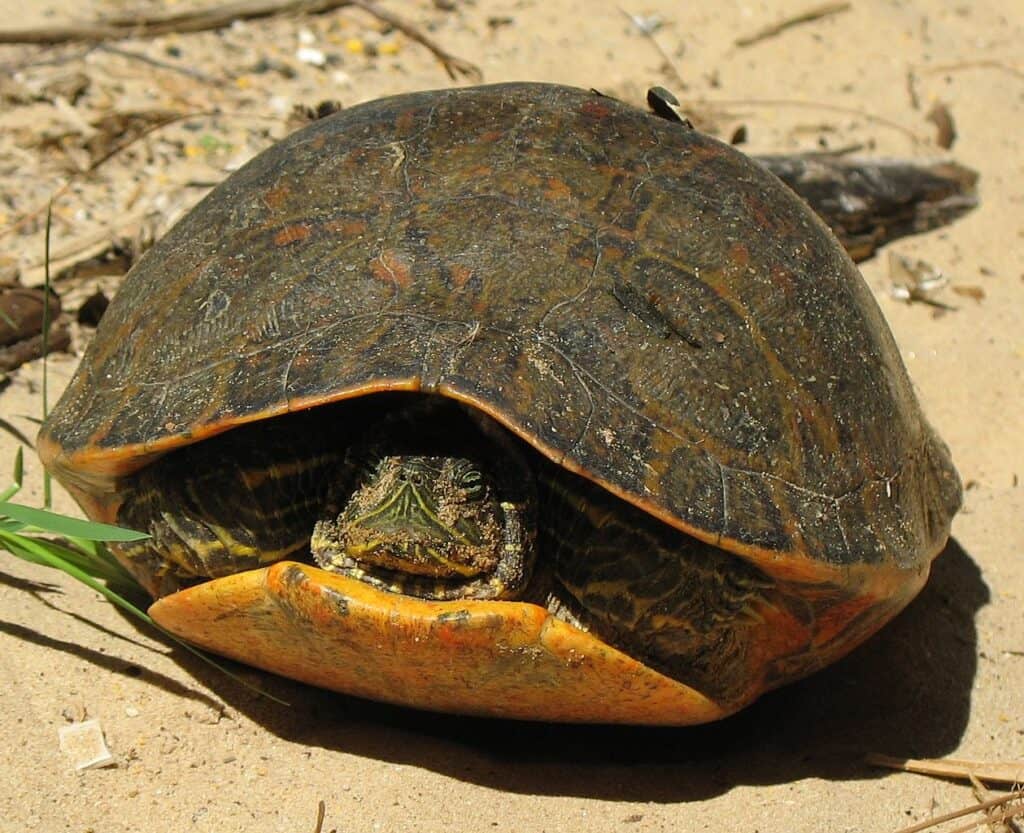
The Alabama red-bellied turtle is endemic to the state’s Mobile-Tensaw River Delta.
©Alabama_red-bellied_turtle_US_FWS.jpg: Josh Roswell/U.S. Fish and Wildlife Service. TCO / public domain - License
Alabama named the Alabama red-bellied turtle its official state reptile in 1990. The IUCN currently lists it as an endangered species.
Arizona: Arizona Ridge-Nosed Rattlesnake (Crotalus willardi willardi)

The Arizona ridge-nosed rattlesnake is a venomous pit viper species native to the sky islands of the Southwest U.S. and Mexico.
©Matt Jeppson/Shutterstock.com
Arizona named the Arizona ridge-nosed rattlesnake its official state reptile in 1986.
California: Desert Tortoise (Gopherus agassizii)
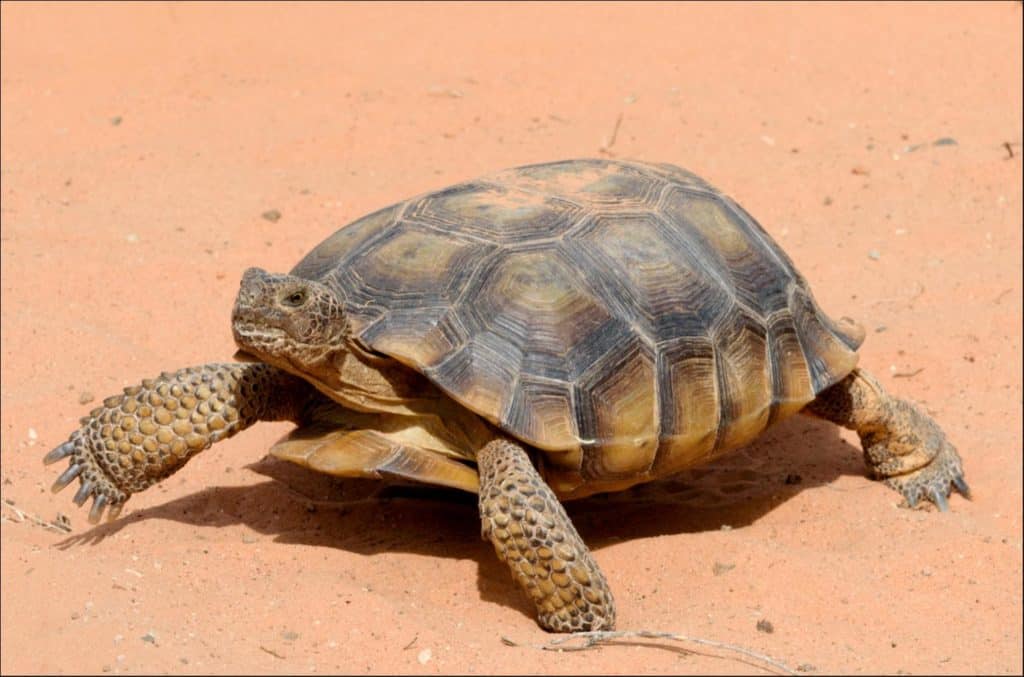
Desert tortoises escape extreme desert temperatures by digging subterranean burrows.
©John Andrus/Shutterstock.com
California named the desert tortoise its official state reptile in 1972. The IUCN currently lists it as a critically endangered species.
California: Leatherback Sea Turtle (Dermochelys coriacea)
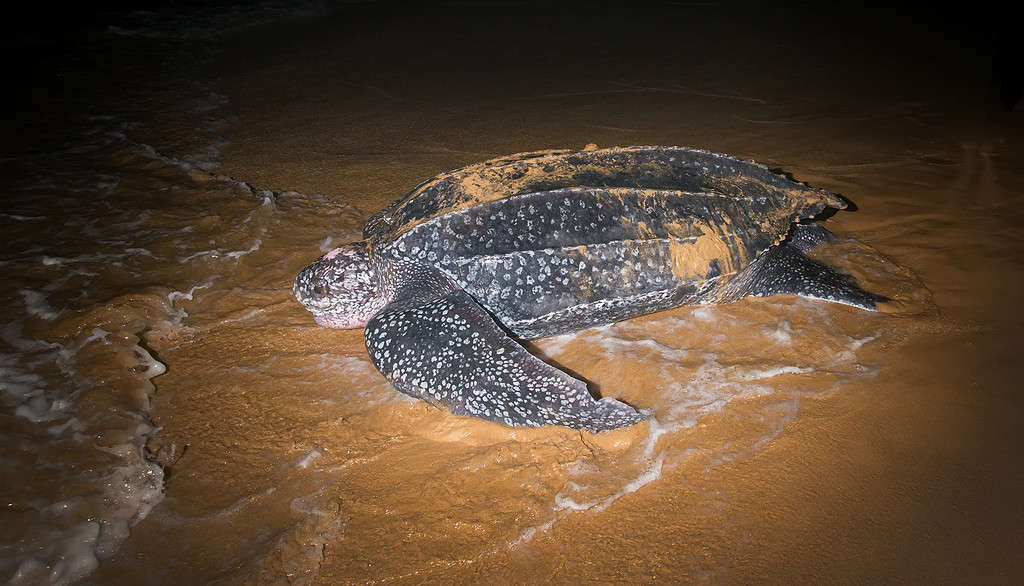
The leatherback is the world’s largest living turtle species.
©irin717/iStock via Getty Images
California also named the leatherback sea turtle its official state marine reptile in 2012.
Colorado: Western Painted Turtle (Chrysemys picta belli)
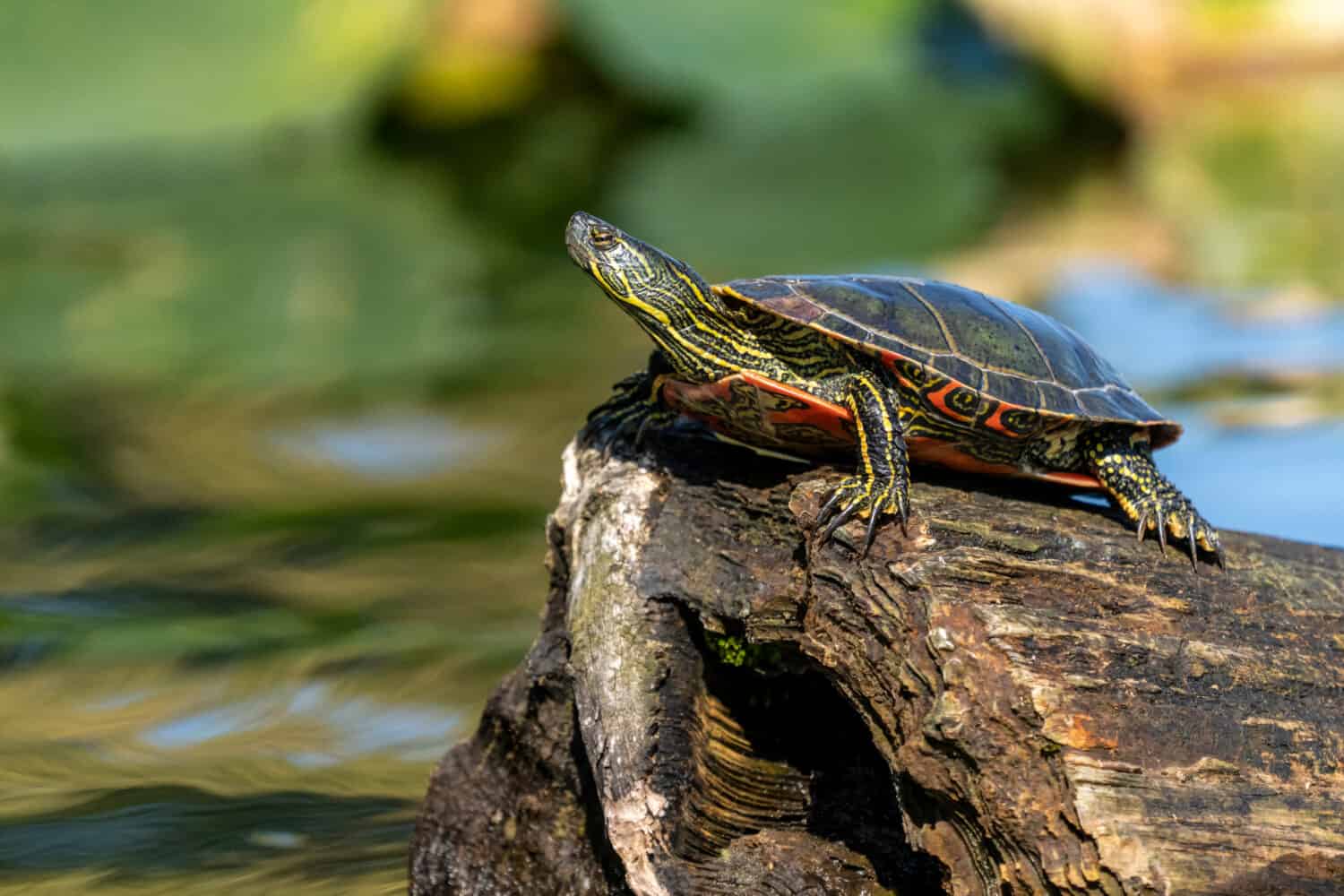
The western painted turtle is the largest painted turtle subspecies.
©Danita Delimont/Shutterstock.com
Colorado named the western painted turtle its official state reptile in 2008.
Florida: American Alligator (Alligator mississippiensis)

South Florida is the only place where both native alligators and crocodiles co-exist in the wild.
©Marc Pletcher/Shutterstock.com
Florida named the American alligator its official state reptile in 1987.
Florida: Loggerhead Sea Turtle (Caretta caretta)

The loggerhead is the largest living hard-shelled turtle and the second-largest living turtle overall after its cousin, the leatherback.
©Strobilomyces, CC BY-SA 3.0 - License
Florida also named the loggerhead sea turtle its official state saltwater reptile in 2008.
Florida: Gopher Tortoise (Gopherus polyphemus)

The gopher
tortoise
is native to the Southeastern United States.
©Kristian Bell/Shutterstock.com
Florida also named the gopher tortoise its official state tortoise in 2008. The IUCN currently lists it as a vulnerable species.
Georgia: Gopher Tortoise (Gopherus polyphemus)
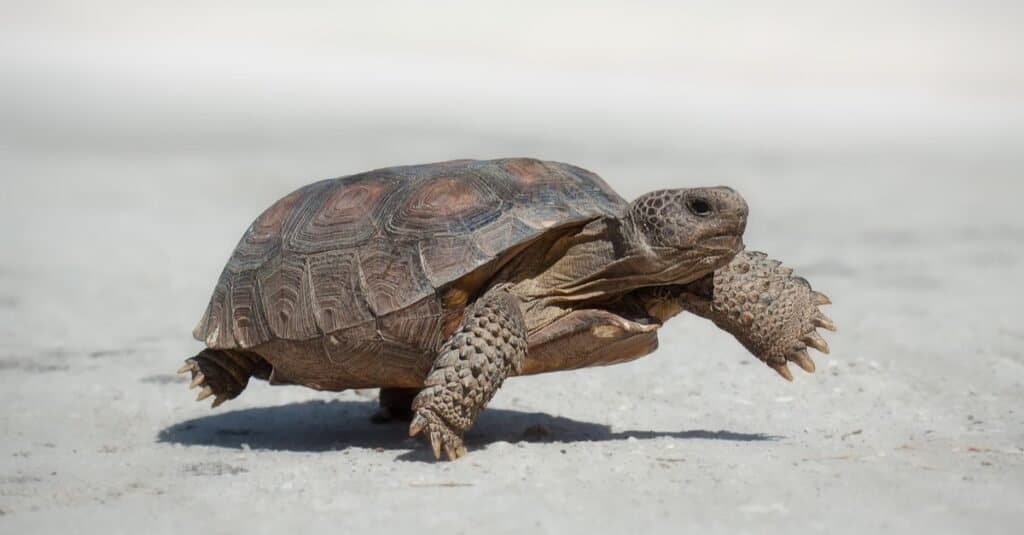
The gopher tortoise is a keystone species whose burrows provide shelter for hundreds of other species in Southeastern U.S. longleaf ecosystems.
©Kristian Bell/Shutterstock.com
Georgia named the gopher tortoise its official state reptile in 1989.
Illinois: Painted Turtle (Chrysemys picta)
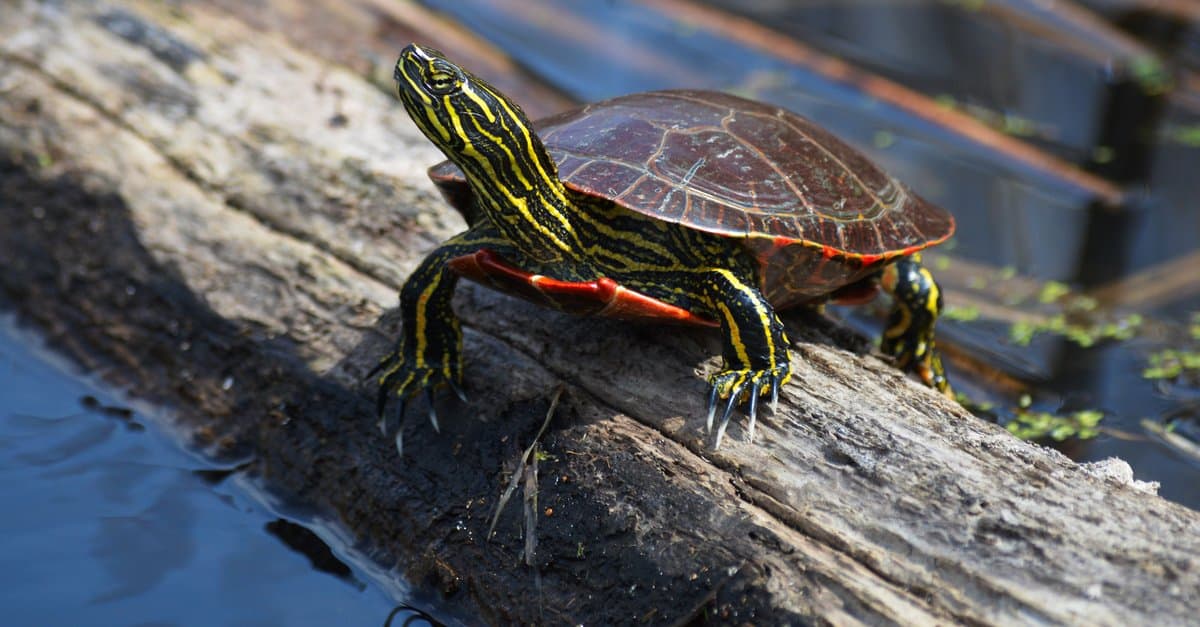
The painted turtle is named for the vibrant red, orange, and yellow colors on its skin and shell.
©KARI K/Shutterstock.com
Illinois named the painted turtle its official state reptile in 2005.
Kansas: Ornate Box Turtle (Terrapene ornata)
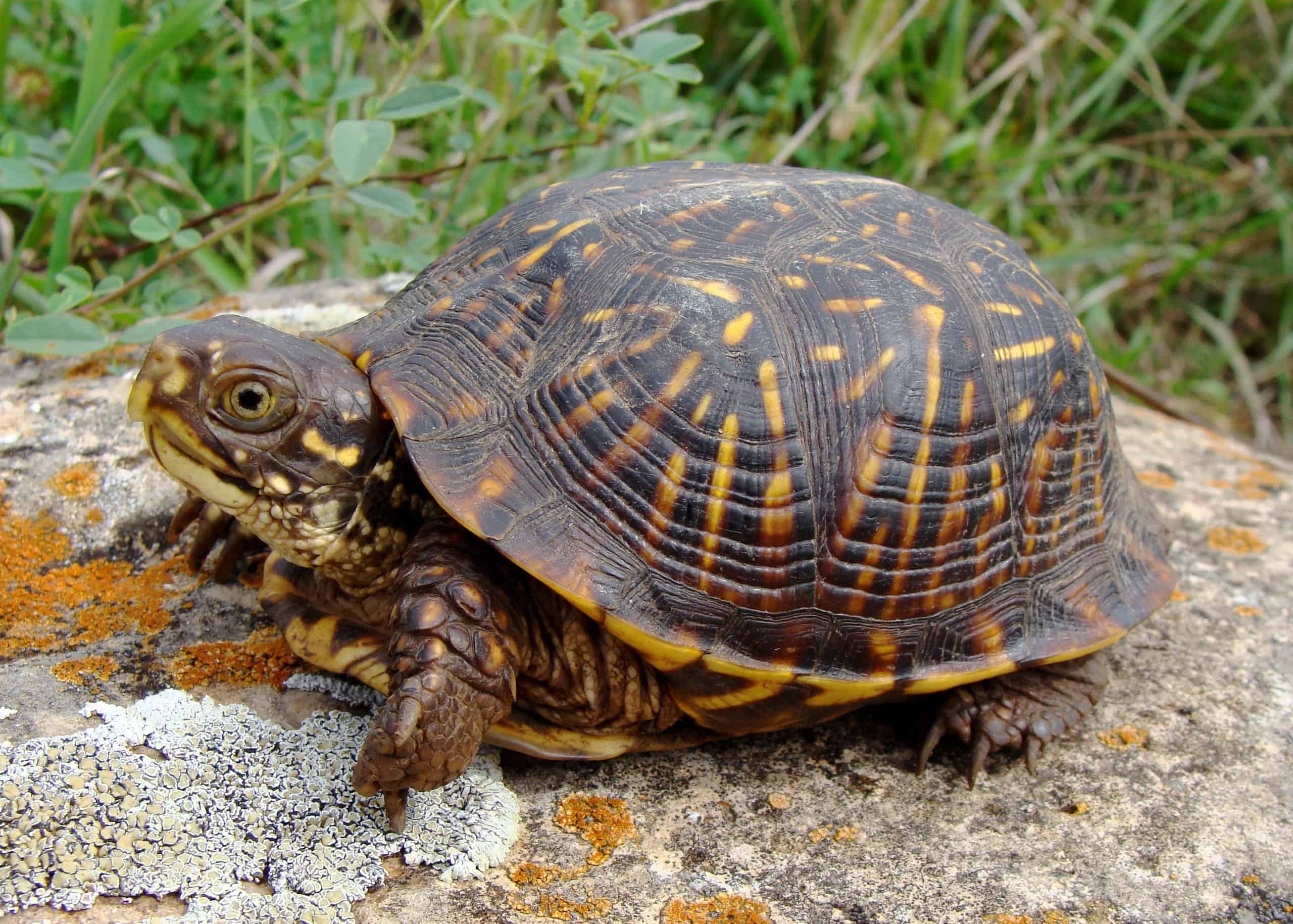
The ornate
box turtle
is also known as the western box turtle.
©Matt Jeppson/Shutterstock.com
Kansas named the ornate box turtle its official state reptile in 1986.
Louisiana: American Alligator (Alligator mississippiensis)

Mother American alligators protect their young for up to their first year of life.
©Marc Pletcher/Shutterstock.com
Louisiana named the American alligator its official state reptile in 1983.
Maryland: Diamondback Terrapin (Malaclemys terrapin)

Diamondback terrapins inhabit brackish coastal tidal marshes.
©Jay Ondreicka/Shutterstock.com
Maryland named the diamondback terrapin its official state reptile in 1994.
Massachusetts: Garter Snake (Thamnophis spp.)

Garter snakes are found across North and Central America.
©iStock.com/rkhalil
Massachusetts named the garter snake its official state reptile in 2006. The state has two native species in this genus: the common garter snake (Thamnophis sirtalis) and the ribbon snake
(Thamnophis sauritus).
Michigan: Painted Turtle (Chrysemys picta)
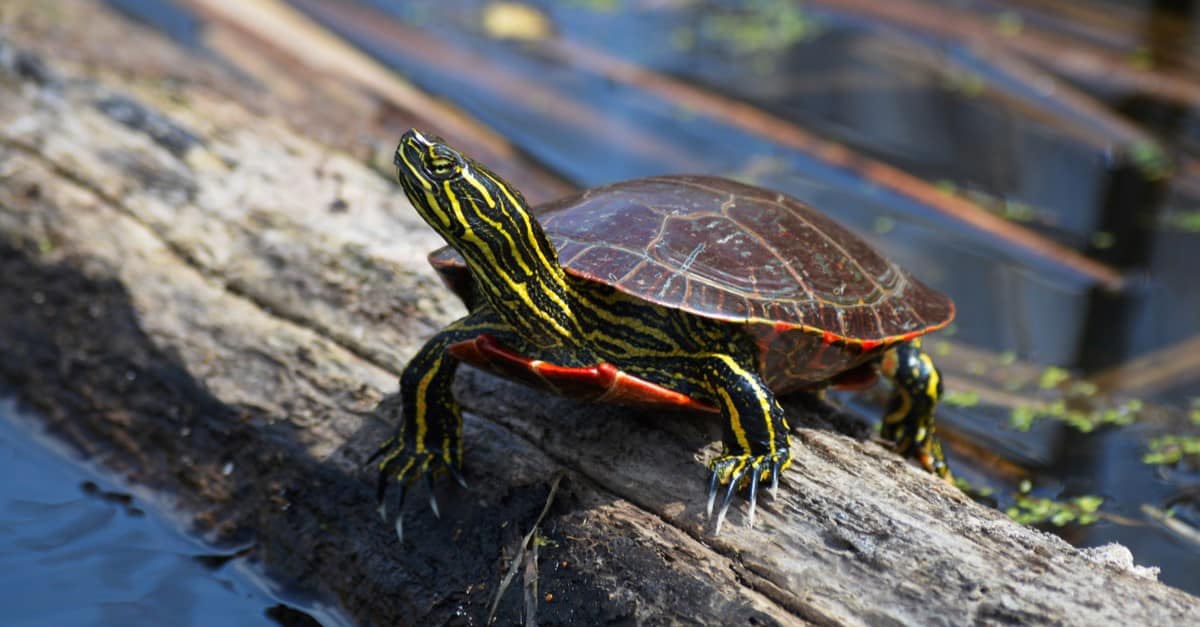
The painted turtle is a member of the pond turtle family and has webbed feet for swimming.
©KARI K/Shutterstock.com
Michigan named the painted turtle its official state reptile in 1995.
Minnesota: Blanding’s Turtle (Emydoidea blandingii)

Blanding’s turtle is named after American naturalist Dr. William Blanding (1773 – 1857).
©Ryan M. Bolton/Shutterstock.com
Minnesota proposed the Blanding’s turtle as its official state reptile in both 1998 and 1999; however, it has yet to be made official. The IUCN currently lists it as an endangered species.
Mississippi: American Alligator (Alligator mississippiensis)

American alligators range across the Southeastern U.S. into the northeastern corner of Mexico.
©Marc Pletcher/Shutterstock.com
Mississippi named the American alligator its official state reptile in 2005.
Missouri: Three-Toed Box Turtle (Terrapene carolina triunguis)
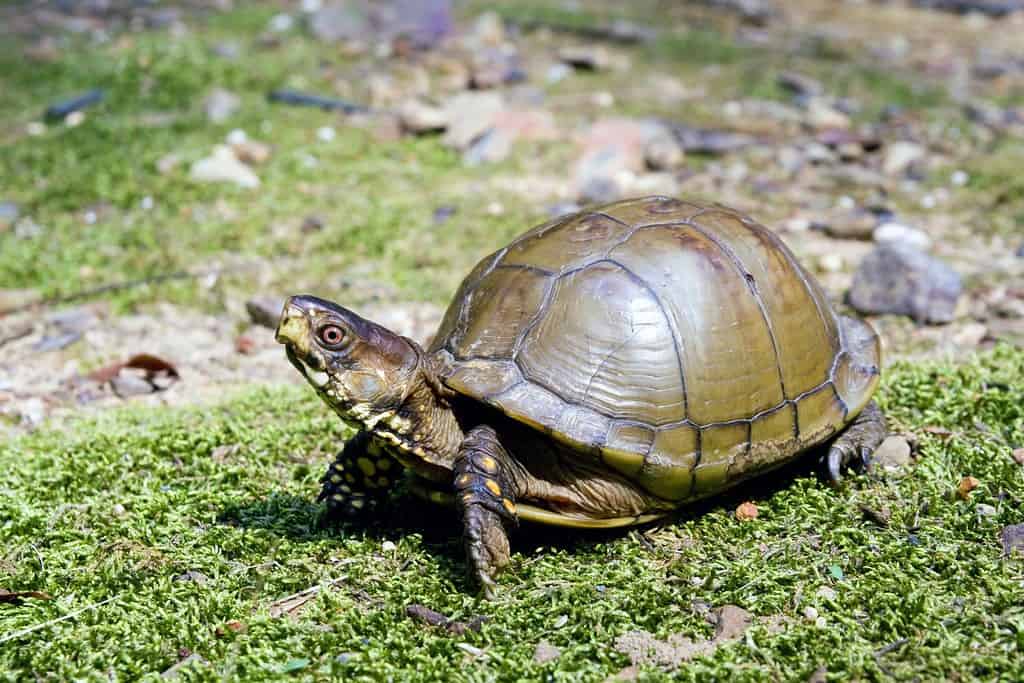
The three-toed box turtle is native to the South Central United States.
©IrinaK/Shutterstock.com
Missouri named the three-toed box turtle its official state reptile in 2007.
Nevada: Desert Tortoise (Gopherus agassizii)
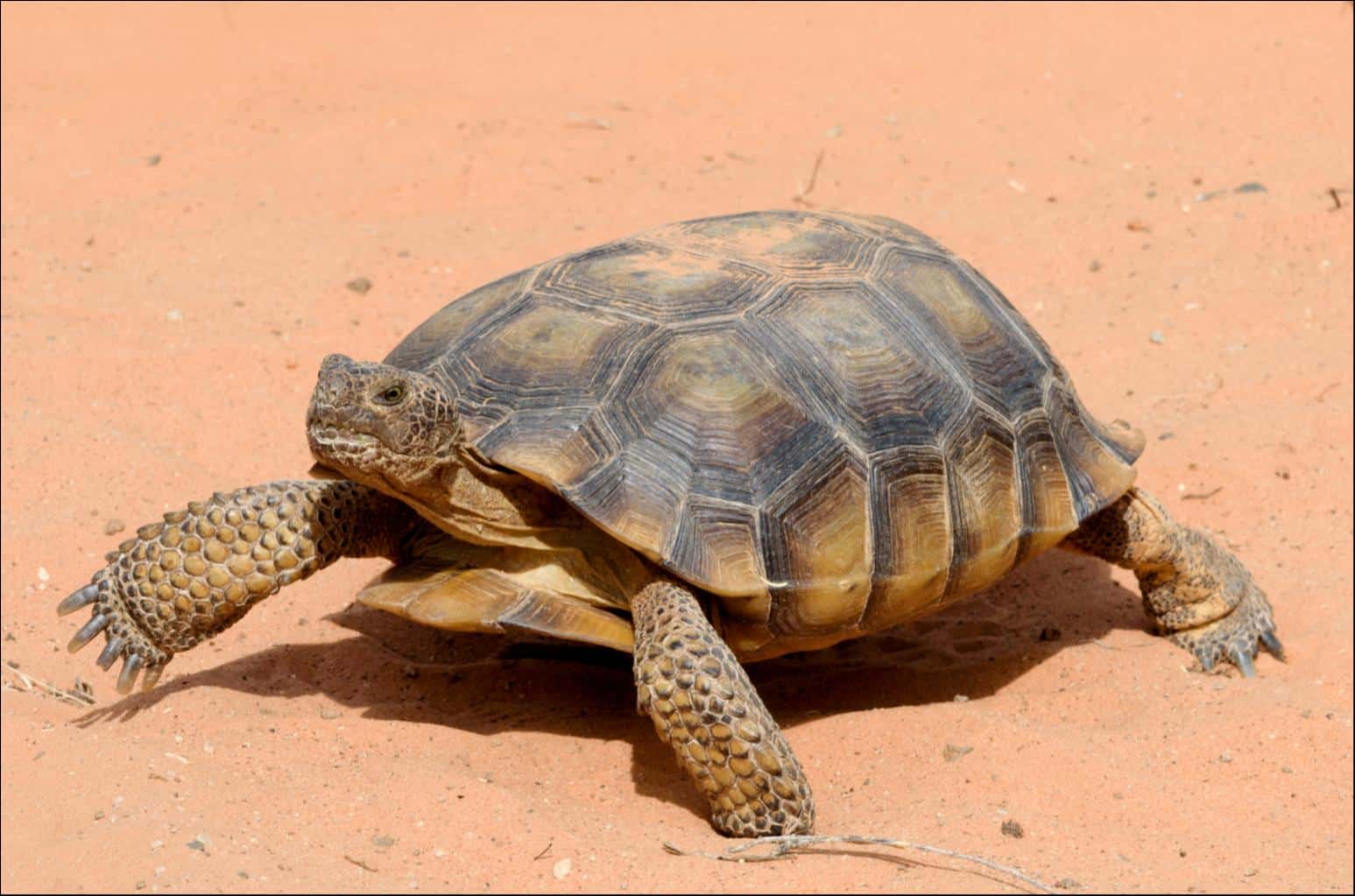
Desert tortoises spend about 95% of their lives in their burrows.
©John Andrus/Shutterstock.com
Nevada named the desert tortoise its official state reptile in 1989. The IUCN currently lists it as a critically endangered species.
New Jersey: Bog Turtle (Glyptemys muhlenbergii)
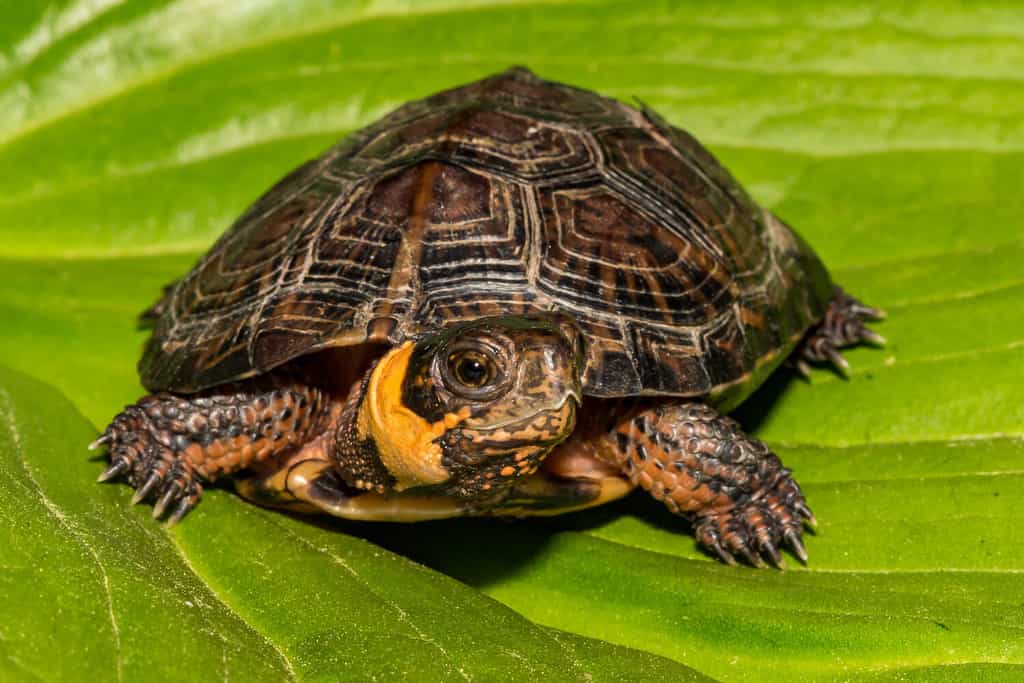
The bog turtle is endemic to the Eastern U.S. and is North America’s smallest native turtle.
©Jay Ondreicka/Shutterstock.com
New Jersey named the bog turtle its official state reptile in 2018. The IUCN currently lists it as a critically endangered species.
New Mexico: New Mexico Whiptail Lizard (Cnemidophorus neomexicanus)
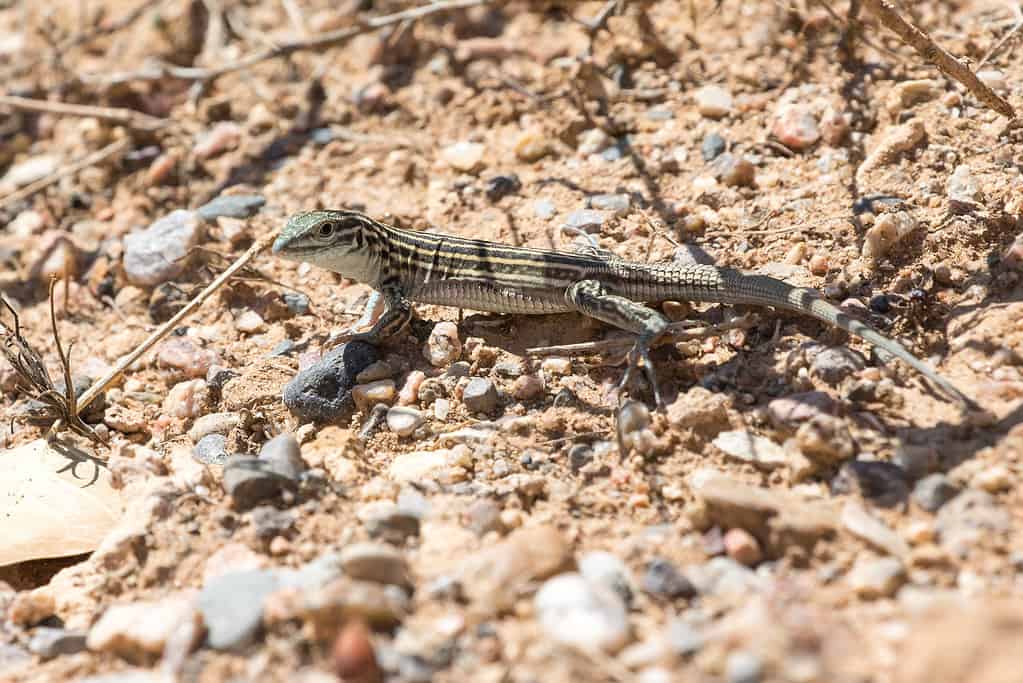
The New Mexico whiptail lizard has an unusual reproductive strategy, relying on interspecific hybridization and parthenogenesis, as all breeding adults of the species are female.
©Elliotte Rusty Harold/Shutterstock.com
New Mexico named the New Mexico whiptail lizard its official state reptile in 2003.
New York: Common Snapping Turtle (Chelydra serpentina)
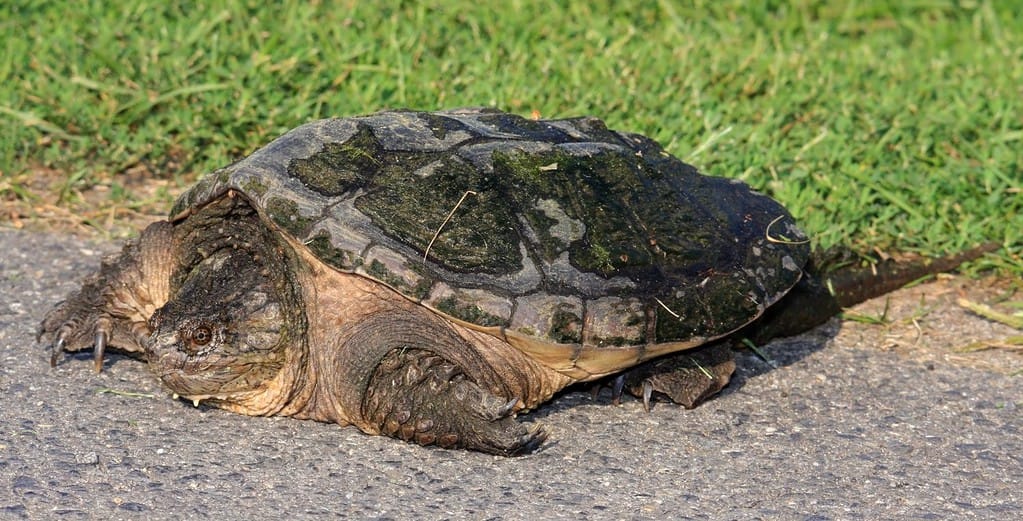
The common snapping turtle is the most widespread snapping turtle species.
©Joseph M. Arseneau/Shutterstock.com
New York named the common snapping turtle its official state reptile in 2006.
North Carolina: Eastern Box Turtle (Terrapene carolina carolina)

As its common name suggests, the eastern box turtle is a subspecies of the common box turtle found in the eastern half of the United States.
©Breck P. Kent/Shutterstock.com
North Carolina named the eastern box turtle its official state reptile in 1979.
Ohio: Northern Black Racer (Coluber constrictor constrictor)
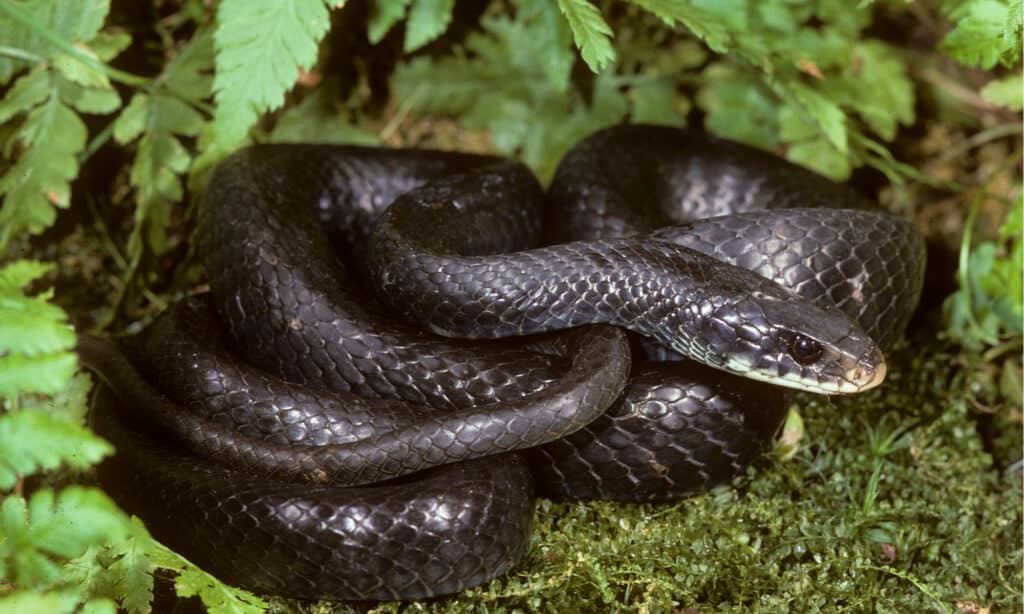
The northern black racer is a subspecies of the North American racer
.©Breck P. Kent/Shutterstock.com
Ohio named the northern black racer its official state reptile in 1995.
Oklahoma: Common Collared Lizard (Crotaphytus collaris)
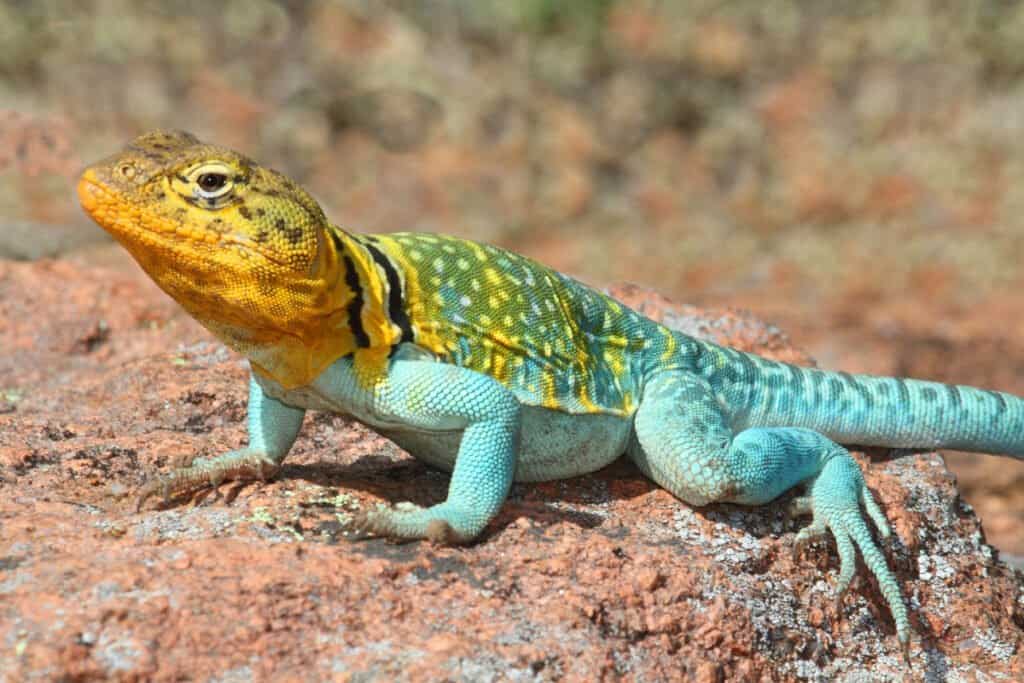
The collared lizard is named for the black banding around the neck and shoulders.
©iStock.com/SteveByland
Oklahoma named the common collared lizard its official state reptile in 1969. It was the first state to name an official state reptile.
South Carolina: Loggerhead Sea Turtle (Caretta caretta)

The loggerhead is the most widely distributed sea turtle species, found in the Atlantic, Indian, and Pacific Oceans as well as the Mediterranean Sea.
©Strobilomyces, CC BY-SA 3.0 - License
South Carolina named the loggerhead sea turtle its official state reptile in 1988.
Tennessee: Eastern Box Turtle (Terrapene carolina carolina)

Eastern box turtles have variable coloration on both their skin and shells, with red, orange, yellow, brown, and black patterns.
©Breck P. Kent/Shutterstock.com
Tennessee named the eastern box turtle its official state reptile in 1995.
Texas: Texas Horned Lizard (Phrynosoma cornutum)
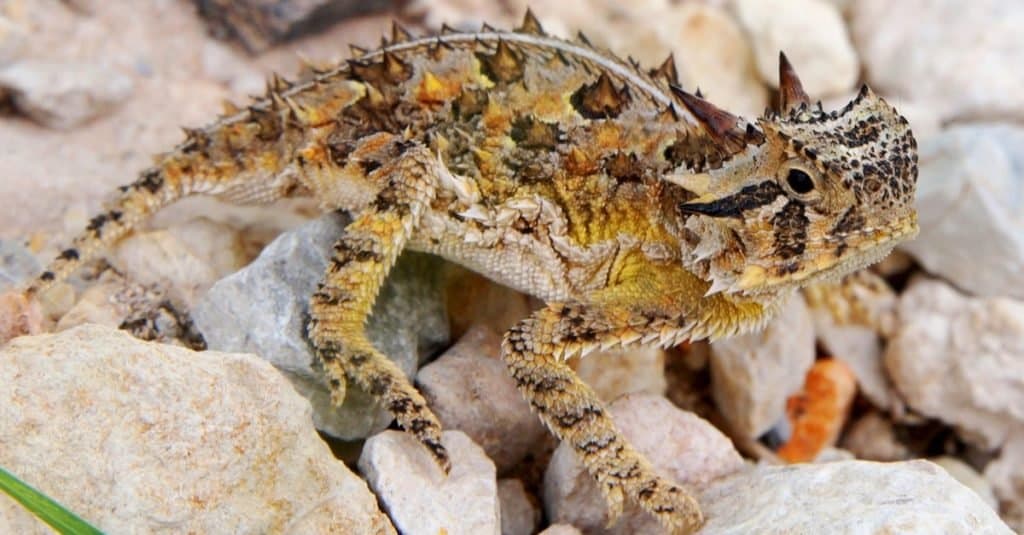
The Texas horned lizard ranges across the South Central U.S. and northeastern Mexico, making it the most widely distributed horned lizard species.
©Matt Jeppson/Shutterstock.com
Texas named the Texas horned lizard its official state reptile in 1993.
Texas: Kemp’s Ridley Sea Turtle (Lepidochelys kempii)
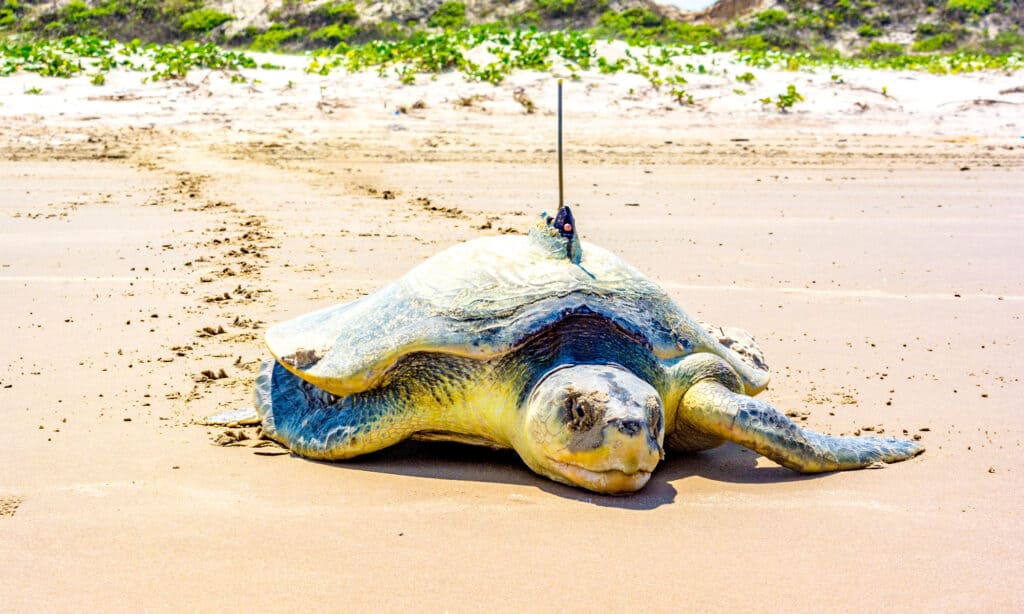
The Kemp’s ridley is the world’s most endangered sea turtle species.
©JB Manning/Shutterstock.com
Texas also named the Kemp’s ridley sea turtle its official state sea turtle in 2013. The IUCN currently lists it as a critically endangered species.
Utah: Gila Monster (Heloderma suspectum)

The Gila monster is the only venomous lizard native to the United States.
©Vaclav Sebek/Shutterstock.com
Utah named the Gila monster its official state reptile in 2019.
Vermont: Painted Turtle (Chrysemys picta)

The painted turtle is the most popular pick on this list!
©KARI K/Shutterstock.com
Vermont named the painted turtle its official state reptile in 1994.
Virginia: Eastern Garter Snake (Thamnophis sirtalis sirtalis)
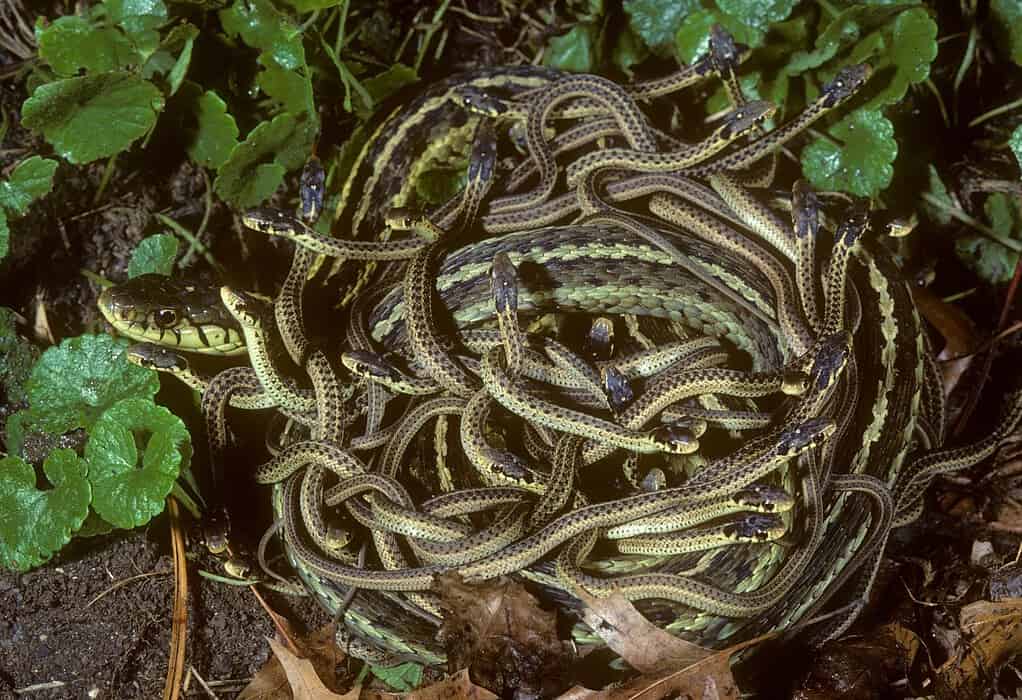
Eastern garter snakes are ovoviviparous, meaning they give birth to live young.
©Breck P. Kent/Shutterstock.com
Virginia named the eastern garter snake its official state snake in 2016.
West Virginia: Timber Rattlesnake (Crotalus horridus)
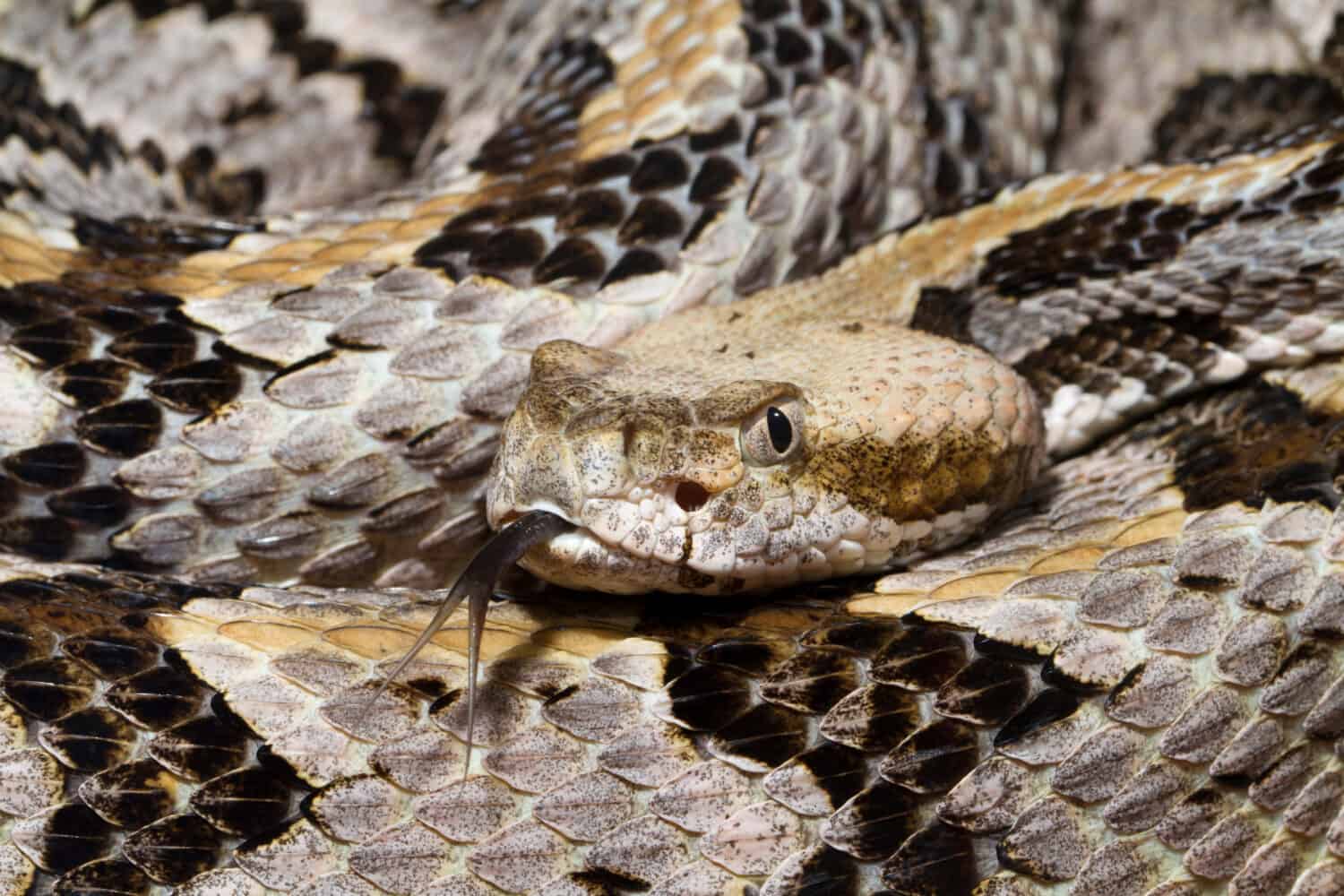
The timber rattlesnake is one of only two venomous snake species native to West Virginia, the other being the northern copperhead (
Agkistrodon contortrix mokasen).
©Mark_Kostich/Shutterstock.com
West Virginia named the timber rattlesnake its official state reptile in 2008.
Wyoming: Horned Lizard (Phrynosoma spp.)

Horned lizards are also known as “horned toads” due to their superficial similarity to toads; however, toads are amphibians.
©Nathan A Shepard/Shutterstock.com
Wyoming named the horned lizard its official state reptile in 1993. While a specific species was not named in the original legislation, the only regularly occurring species in the state is the greater short-horned lizard (Phrynosoma hernandesi).
Summary of “The Complete List of Every Official US State Reptile (With Pictures!)”
| State | Reptile | Year | Notes |
|---|---|---|---|
| Alabama | Alabama Red-Bellied Turtle (Pseudemys alabamensis) | 1990 | |
| Arizona | Arizona Ridge-Nosed Rattlesnake (Crotalus willardi willardi) | 1986 | |
| California | Desert Tortoise (Gopherus agassizii) | 1972 | |
| California | Leatherback Sea Turtle (Dermochelys coriacea) | 2012 | state marine reptile |
| Colorado | Western Painted Turtle (Chrysemys picta belli) | 2008 | |
| Florida | American Alligator (Alligator mississippiensis) | 1987 | |
| Florida | Loggerhead Sea Turtle (Caretta caretta) | 2008 | state saltwater reptile |
| Florida | Gopher Tortoise (Gopherus polyphemus) | 2008 | state tortoise |
| Georgia | Gopher Tortoise (Gopherus polyphemus) | 1989 | |
| Illinois | Painted Turtle (Chrysemys picta) | 2005 | |
| Kansas | Ornate Box Turtle (Terrapene ornata) | 1986 | |
| Louisiana | American Alligator (Alligator mississippiensis) | 1983 | |
| Maryland | Diamondback Terrapin (Malaclemys terrapin) | 1994 | |
| Massachusetts | Garter Snake (Thamnophis spp.) | 2006 | common garter snake (Thamnophis sirtalis) & ribbon snake (Thamnophis sauritus) |
| Michigan | Painted Turtle (Chrysemys picta) | 1995 | |
| Eastern garter snake (Thamnophis sirtalis sirtalis) | Blanding’s Turtle (Emydoidea blandingii) | – | proposed in 1998 & 1999 |
| Mississippi | American Alligator (Alligator mississippiensis) | 2005 | |
| Missouri | Three-Toed Box Turtle (Terrapene carolina triunguis) | 2007 | |
| Nevada | Desert Tortoise (Gopherus agassizii) | 1989 | |
| New Jersey | Bog Turtle (Glyptemys muhlenbergii) | 2018 | |
| New Mexico | New Mexico Whiptail Lizard (Cnemidophorus neomexicanus) | 2003 | |
| New York | Common Snapping Turtle (Chelydra serpentina) | 2006 | |
| North Carolina | Eastern Box Turtle (Terrapene carolina carolina) | 1979 | |
| Ohio | Northern Black Racer (Coluber constrictor constrictor) | 1995 | |
| Oklahoma | Common Collared Lizard (Crotaphytus collaris) | 1969 | |
| South Carolina | Loggerhead Sea Turtle (Caretta caretta) | 1988 | |
| Tennessee | Eastern Box Turtle (Terrapene carolina carolina) | 1995 | |
| Texas | Texas Horned Lizard (Phrynosoma cornutum) | 1993 | |
| Texas | Kemp’s Ridley Sea Turtle (Lepidochelys kempii) | 2013 | state sea turtle |
| Utah | Gila Monster (Heloderma suspectum) | 2019 | |
| Vermont | Painted Turtle (Chrysemys picta) | 1994 | |
| Virginia | Eastern Garter Snake (Thamnophis sirtalis sirtalis) | 2016 | |
| West Virginia | Timber Rattlesnake (Crotalus horridus) | 2008 | |
| Wyoming | Horned Lizard (Phrynosoma spp.) | 1993 | greater short-horned lizard (Phrynosoma hernandesi) |
The photo featured at the top of this post is © Jay Ondreicka/Shutterstock.com
Thank you for reading! Have some feedback for us? Contact the AZ Animals editorial team.







